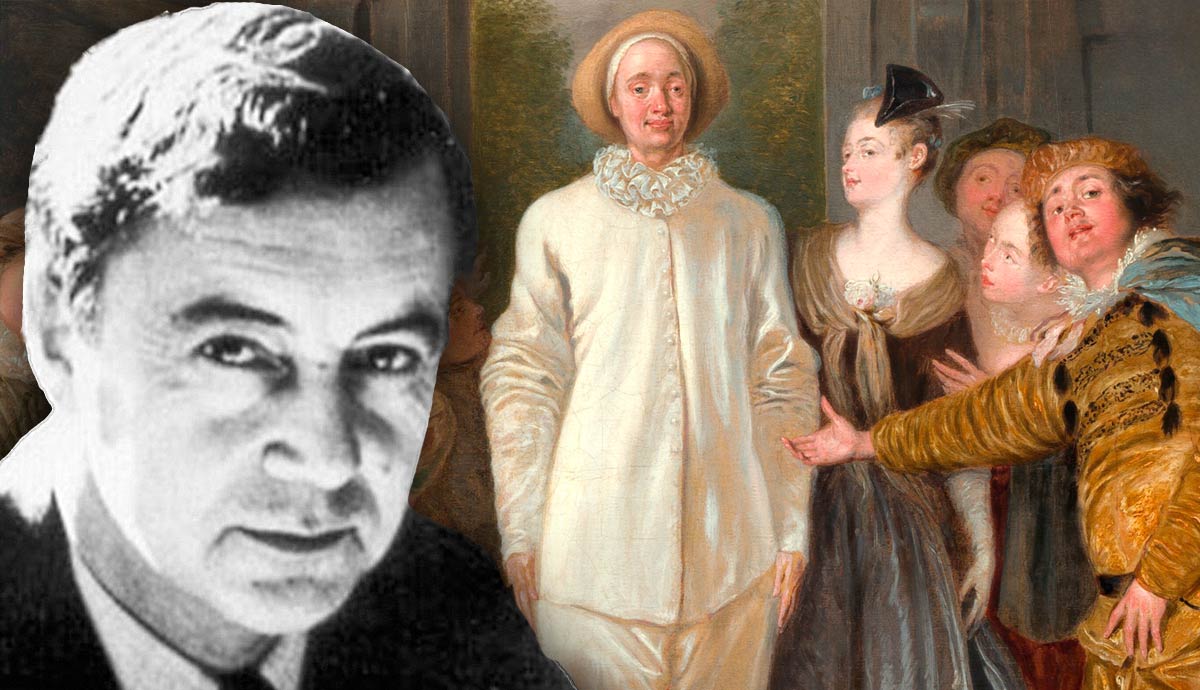
Erving Goffman was one of the most prominent sociologists of the 20th century. In his view, our everyday interactions are very similar to theatrical performances. Even if we don’t consciously realize it, we constantly deal with front and back stages in our lives. Further, we cast ourselves as the protagonists on these stages. But how does this work? Are we like actors, adapting to each stage we find ourselves on?
Social Dramaturgy: Social Interactions as Theatrical Performance

Erving Goffman was a Canadian-born American sociologist, social psychologist, and writer. He’s credited as one of the most influential sociologists of the 20th century. His theories had an everlasting impact on many research fields, including sociology, psychology, and philosophy.
While Goffman worked on many different topics throughout his lifetime, the concept of social dramaturgy is widely seen as his major contribution to research. His work on this matter started with his 1956 book The Presentation of Self in Everyday Life.
Social dramaturgy argues that our everyday life resembles a theatrical performance. It argues that elements of our interactions are dependent on factors such as time, place, and audience. In other words, Goffman sees theater as a metaphor for everyday life. This can be traced back to the word “person.” This word comes from the Latin “persona,” which refers to a mask worn by actors. Much like actors use different masks according to their roles and the audience they play for, humans behave differently in front of different people.
Face-to-Face Interactions: Controlling Appearance and Behavior for the Audience

Goffman starts his analysis with face-to-face interaction in The Presentation of Self in Everyday Life. He believes that when an individual comes in contact with other people, they will try to control or guide the impression that others will have of them. This means that the individual will try to fix their setting, appearance, and manners based on the impression they want to make on the other people they come in contact with.
One major point to keep in mind is that Goffman believes that all humans are trying to avoid being embarrassed or embarrassing others; this is the very core of Goffman’s theory, as it’s the need to avoid embarrassment that drives individuals to fix their appearance and manners. And that’s where the comparison between real life and theatrical performances is born: humans are natural-born actors because they feel the need to control how others will react to them. This has a way greater impact than what can initially seem: Goffman reshapes the core concept of Self in light of his theory.

In Goffman’s view, our Self is not a stable, independent psychological entity, opposing earlier theories on the Self. Self and identity depend on our stage, so we have a different identity in every different “stage” we walk in. Every stage has its own different set of rules and values: everyday examples could include schools, work environments, hospitals, but also a party with friends or a meeting with family members. Each stage is a completely different piece with different audiences, and we have different roles to play in it. But every stage has multiple areas within itself: much like in theater, you have a front stage and a backstage, and the same happens in these real-life environments.

Stages of the Performance

Every stage has three main areas: front, back, and outside. Each of these three stage areas requires different roles and often conveys different information from one another. It’s almost like they are a whole, separate stage, but they usually share the same basic values and norms between each other.
The front stage is probably the most important area of the stage. Goffman’s definition of the front stage is what we’ve already discussed as a face-to-face encounter. When an individual (the actor) meets other people (the audience), they want to make a certain impression on them. Thus, the individual will try to manipulate and guide their impression by fixing their behavior and manner.
When acting on the front stage, the individual will adhere to values and norms shared by their audience. For example, a waiter in a classy restaurant will probably fix their manners and appearance according to their employer and clients’ expectations.
They will try to be accommodating to customers, and they will also try to use a language that is appropriate for this specific setting. This “waiter persona” is not necessarily what the waiter is in their ordinary life when they’re not on the job. But when they’re on the restaurant stage to play the waiter role, they must adhere to norms and conventions, as the audience (clients) expects.
The backstage is where the actor can revert to their “everyday” self and where they are allowed to express feelings and considerations that would not be allowed on the front stage. The audience is not allowed in this area; otherwise, the performance wouldn’t work.
Let’s go back to our example. When the waiter enters the kitchen or is alone with other waiters, they may express their feelings about what happened on the front stage. They might make comments about some clients, or they might complain about them, and they might reveal that they hate speaking in such an artificial, unrealistic, and classy way.
The backstage can also be used for rehearsal: just like in a theatrical performance, actors can use this area to review their script and practice their roles.
There’s a third area that Goffman defines as outside or off-stage. Here, we can find outsiders who are not part of the representation and may not even be aware of said representation. In our example, outside could be the outside area of the restaurant.
The focus, however, is on the first two areas, front stage and backstage. These two areas must be separated from one another, both as physical spaces but also as entities. Let’s say that our waiter suddenly starts yelling at clients. Something like this will suddenly take the performance to a halt. The same would happen if a client suddenly entered the kitchen: it would break the unwritten laws of the representation, as the audience shouldn’t be allowed backstage.
The actors and the audience all play a role in the performance. It’s a common misconception that only actors are acting in a performance. The audience also has a role with some rules, just like the actors. For example, the audience will usually allow for a few mistakes without breaking the illusion of the performance. Similarly, they will overlook some details for the performance to progress flawlessly.
This means that every person on the stage is involved in the performance in some way or another. They’re just playing different roles. But there’s another key element that must be addressed regarding social interactions.
The Border Phenomenon, a Key to Social Interaction

Borders, or boundaries, prevent or restrict individuals’ movement between various regions. The easiest example of this is physical borders. Let’s think about a theatrical performance. The front stage and the backstage are physically apart. There’s a physical border between the front stage and the audience.
These borders can be found in our every social interaction as well. They have a strong metaphorical message, which tells us where we should be, according to the role we must play on the stage–a primary example is prisons.
Going back to the restaurant example we’ve chosen, the door to the restaurant’s kitchen acts as a border. Actors can access the kitchen, but the audience can’t go inside. Clients know that they can’t go through that door, as that is not the area of the stage where they belong. And that works the other way around, too: the waiter knows they can’t sit at a table because that’s where the audience will be.
In general, borders are what give a specific context its meaning. If borders, physically and conceptually, did not separate the restaurant, nothing would make it different from what’s outside.
Borders allow us to understand that there are different areas in a stage and different stages in our lives. It’s the presence of borders that allows us to define a stage. And at the same time, borders are what define roles.
Let’s go back to our example. It’s the borders of the restaurant that make the individual who’s working inside it a waiter. When they come out of these borders, they are someone else. In the stage of their family house, for example, they might be a son, daughter, parent, or whatever is the case.
How Can Social Dramaturgy Aid Us in Social Interactions?

There’s much more to social dramaturgy than what we’ve discussed today. Goffman wrote many books on the matter, and other researchers continued his work after his passing. However, it would be hard to fit everything into a single piece, so we wanted to focus on the core aspects of social dramaturgy and what we can take away from it.
Social dramaturgy teaches us that our social interactions are similar to theatrical performances. Of course, this interpretation of everyday life is up for debate, but we can all easily agree, at least on the similarities between these two areas. Every one of us has experienced at least one instance when we wanted to make a certain impression. Maybe on a date, maybe on a work-related meeting, or maybe in an entirely different scenario. But it’s most probably something that we’ve all gone through.
And we also have some degree of familiarity with the concept of roles and borders. For example, when we see a doctor, we expect them to behave a certain way. We expect them to be caring and empathetic.
While it’s important to respect a stage’s norms and values, sometimes we should take a step back and realize that we are actors in a play, but we’re more than just a role or a collection of roles. Behind every persona, there’s still a person we know little about. Sometimes, we’re far too quick to judge someone based on a first glance. Social dramaturgy can remind us that human beings are far more complex than we usually think and that we should always keep this in mind when interacting.










